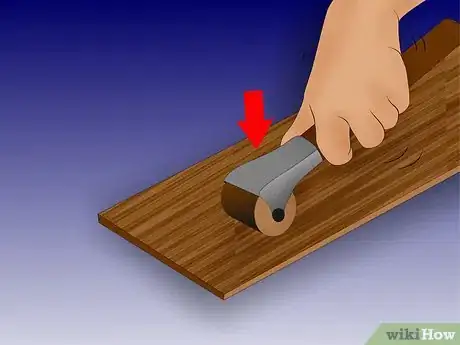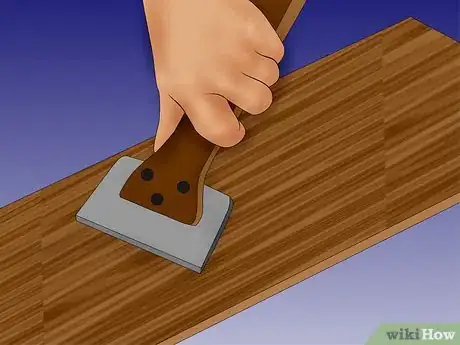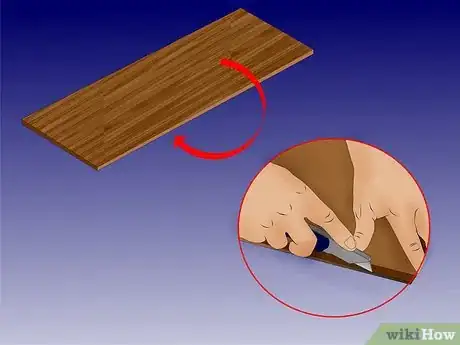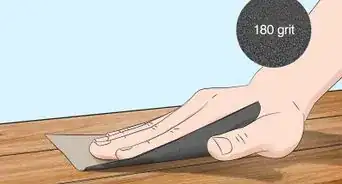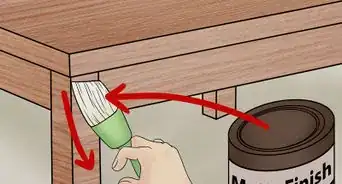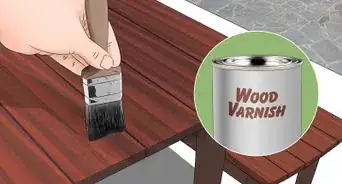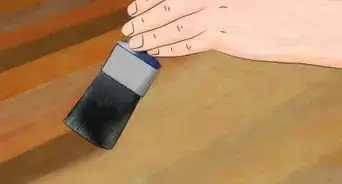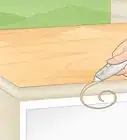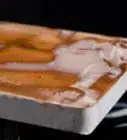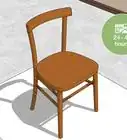wikiHow is a “wiki,” similar to Wikipedia, which means that many of our articles are co-written by multiple authors. To create this article, volunteer authors worked to edit and improve it over time.
wikiHow marks an article as reader-approved once it receives enough positive feedback. In this case, 94% of readers who voted found the article helpful, earning it our reader-approved status.
This article has been viewed 117,449 times.
Learn more...
Applying wood veneer was once rumored to be a difficult task, reserved mainly for seasoned professionals. These days, since tools and supplies are readily available and many of the methods are so simple, even a novice woodworker can easily master the process. There are as many techniques for application as there are varieties of veneer, but contact cement is commonly regarded as the most practical method. It is also among the most enduring applications. Here are some guidelines to get you started as your learn how to apply wood veneer.
Steps
-
1Cut the substrate (the material that the veneer is actually applied to) to the exact finish size. This way, you can cut just the excess veneer with a razor knife and avoid damaging the finished product by using a table saw.
-
2Select the most appealing section of the veneer pattern, which will be visible in the finished piece, keeping in mind that any excess will be trimmed.[1]
- One effective way to isolate your preferred section is to make a cardboard template. This will need to be cut to the identical size of the substrate panel by laying the substrate over the cardboard, marking the edges and then cutting the cardboard.
Advertisement -
3Place your template over the desired section of veneer and cut out that portion, leaving approximately one-half inch, or 1.27 centimeters (0.5 in), of excess on each side.
-
4Center the selected pattern section over the substrate panel and apply the contact cement, following the manufacturer's instructions, to both the veneer and the substrate. Allow it to set.[2]
- Be sure to mix the adhesive thoroughly before applying it. This will maximize its effectiveness.
-
5Use extreme caution when positioning the two elements for adherence. Since contact cement is so slip-resistant, they must be perfectly aligned on the first try.[3]
-
6Using maximum pressure, roll the veneer smooth by starting in the center and working out toward the edges using a veneer roller.[4]
-
7Still using maximum pressure, smooth the surface with a smoothing blade to verify that the veneer is completely adhered.[5]
-
8Turn your piece upside down and use a razor knife to trim the excess veneer, using the edges of the substrate as your guide.[6]
- Run your hand over the area to be sure that the area is entirely smooth. If you do encounter any bubbles, repeat the two previous steps.
- You can ensure a cleaner cut by scoring the surface first to determine the cut
-
9Allow ample time for curing and drying before finishing the piece.
Community Q&A
-
QuestionWhat other tool can I use if I don't have a razor knife?
 Community AnswerA special guillotine for veneer. But those are hard to find. A razor knife is best for home use.
Community AnswerA special guillotine for veneer. But those are hard to find. A razor knife is best for home use. -
QuestionHow do I bend veneer?
 Community AnswerPut it in boiling water for about 20 minutes. That will allow you to bend it more. Bend the veneer to the position you want and allow it to dry like that. (Wait until it's very dry before gluing it.)
Community AnswerPut it in boiling water for about 20 minutes. That will allow you to bend it more. Bend the veneer to the position you want and allow it to dry like that. (Wait until it's very dry before gluing it.) -
QuestionI am putting veneer over veneer. How do I begin prepping?
 Ashton GilmoreCommunity AnswerAs long as the underlying veneer has no coating and is adhered securely to the base piece, I would simply sand the underlying veneer to rough it up.
Ashton GilmoreCommunity AnswerAs long as the underlying veneer has no coating and is adhered securely to the base piece, I would simply sand the underlying veneer to rough it up.
Warnings
- Contact cement is a great application method because the cement is absolutely permanent. The drawback of this is that you need to be perfectly accurate when aligning the veneer and substrate.⧼thumbs_response⧽
References
- ↑ https://www.youtube.com/watch?v=23UAlN3KfTk
- ↑ https://www.youtube.com/watch?v=23UAlN3KfTk
- ↑ https://www.youtube.com/watch?v=BeFzAPik_68
- ↑ https://www.popularwoodworking.com/techniques/veneer-techniques/how-to-apply-wood-veneer-with-backing/
- ↑ https://www.youtube.com/watch?v=BeFzAPik_68
- ↑ https://www.handymantips.org/how-to-apply-wood-veneer/
- https://www.finewoodworking.com/2015/05/27/introduction-to-wood-veneering





